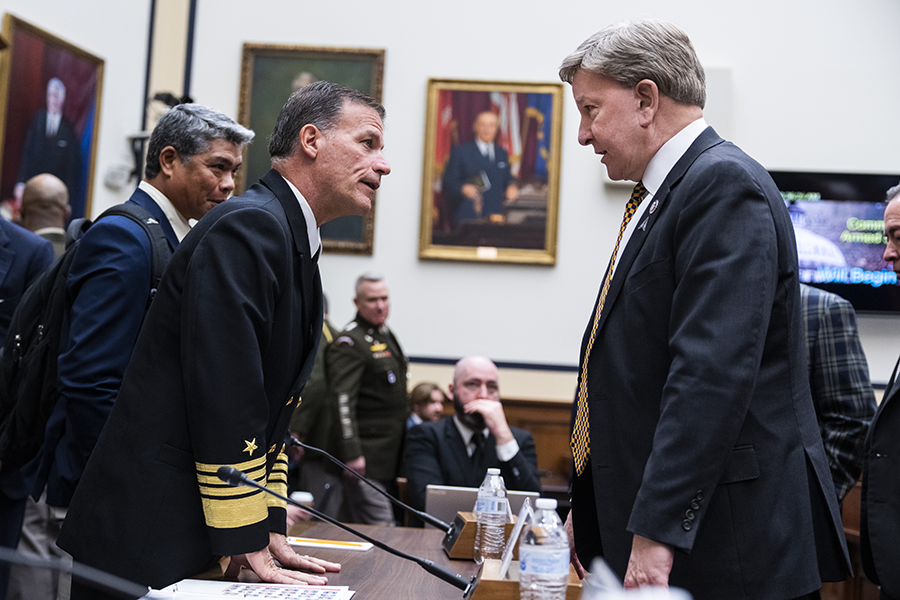“We continue to count on the valuable contributions of the Arms Control Association.”
Congressman Aims to Bolster U.S. Hypersonics Testing
July/August 2023
By Shannon Bugos
The Pentagon’s efforts to develop and deploy new hypersonic weapons to rival those of China and Russia may receive a funding boost from Congress in order to overcome its insufficient testing infrastructure.
 Rep. Doug Lamborn (R-Colo.), chairman of the House Armed Services strategic forces subcommittee, vowed to make hypersonic capabilities a top priority in the U.S. national defense budget process for fiscal year 2024,
Rep. Doug Lamborn (R-Colo.), chairman of the House Armed Services strategic forces subcommittee, vowed to make hypersonic capabilities a top priority in the U.S. national defense budget process for fiscal year 2024,
which is now underway.
Lamborn said on May 13 that he aims to speed up the “way too slow” hypersonic weapons systems development programs, primarily by increasing funding for “different testing capabilities and facilities.”
Adm. John Aquilino, head of U.S. Indo-Pacific Command, acknowledged during an April hearing before the full committee that the Pentagon’s advancements in hypersonic weapons programs must
“go faster.”
“We are in a race with peer competitors that are determined to beat us in hypersonics,” Mark Lewis, a former Pentagon official with expertise in hypersonic weapons systems, stated on June 5. Lewis now works at Purdue University’s Applied Research Institute, which opened a new hypersonic technologies research and testing facility on June 6.
Earlier this year, the Defense Department identified significant inadequacies with ground-test capabilities and missile test ranges for hypersonic weapons, such as insufficient flight-simulation abilities and the need for new or upgraded instrumentation. (See ACT, March 2023.) In March, the Air Force announced that it was canceling the purchase of its Air-Launched Rapid Response Weapon (ARRW), a hypersonic boost-glide system, due to a lackluster testing record. (See ACT, May 2023.)
But in April, Air Force Secretary Frank Kendall suggested that all might not be over for the ARRW system, telling Congress that “we haven’t stopped on ARRW.” Kendall, a known skeptic of the ARRW program, said that the service will wait to see how the missile system finishes its testing program before making a judgment on its future.
Lamborn also emphasized the need for the United States to focus more on building up systems to defend against hypersonic weapons. This type of defense system received increased attention due to Ukraine’s interception on May 4 of a Russian Kinzhal hypersonic air-launched ballistic missile over Kyiv with a U.S.-made Patriot surface-to-air missile defense system.
After much media speculation, Pentagon spokesperson Brig. Gen. Pat Ryder confirmed on May 9 that Ukraine used the Patriot system to down a Russian missile.
The United States, Germany, and the Netherlands all have supplied Ukraine with Patriot missile defense systems.
In late June, the House and Senate Armed Services Committees marked up their respective versions of the National Defense Authorization Act for 2024. The two chambers still need to merge their drafts into one piece of legislation and approve the final version.
Meanwhile, Iran claimed on June 6 that it has created a new hypersonic medium-range ballistic missile weapons system, named Conqueror, with speeds as high as Mach 15. Experts doubted Iran’s claim. John Krzyzaniak of the Wisconsin Project on Nuclear Arms Control, tweeted, “[D]on’t be dazzled by ‘hypersonic’ claims,” noting that the system resembled a ballistic missile with maneuverable reentry vehicle capability.
